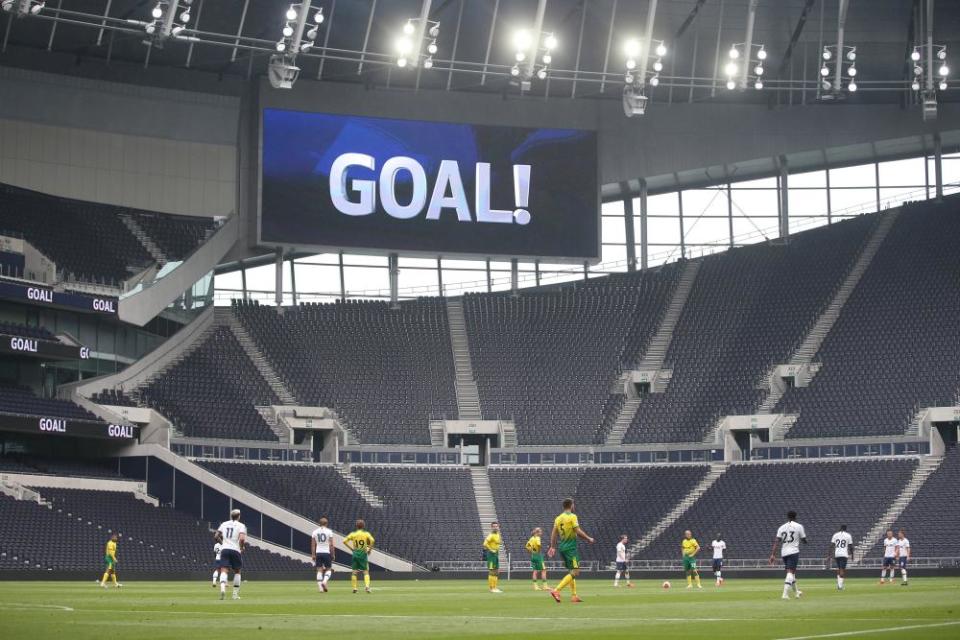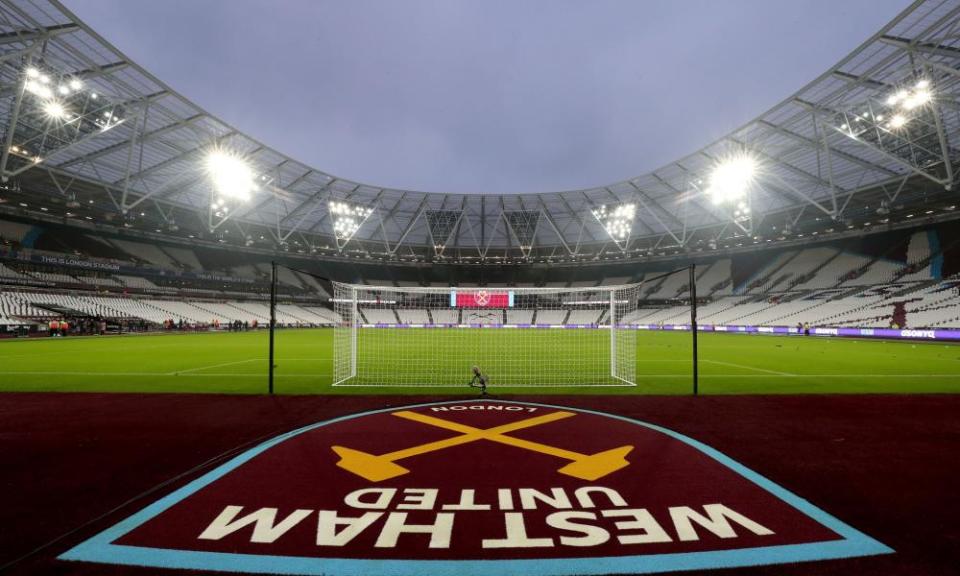Will home advantage really vanish when the Premier League resumes?

And so, we’re back. The Prince (an awkward embodiment of financial necessity and the perceived need for a circus to entertain the frustrated masses) has woken Sleeping Beauty (the Premier League) from her slumbers with a kiss and their fairytale romance will be consecrated at a lavish ceremony on Wednesday (Aston Villa v Sheffield United).
Cynicism is easy and to an extent justified, but this is probably a good thing. People like football and jobs depend on it, and national re-engagement in the grand distraction feels a significant moment in the return to something a little nearer normality. It is not, though, normality, either in society as a whole or on the pitch. So what can the Premier League expect on resumption?
With the strange echoes and muffled grunts, the curiously pleasing range of noises the ball makes when striking nets, goal frames and football boots, the Bundesliga has been curiously familiar. Robert Lewandowski still scores goals. Bayern still win matches. Dortmund and Leverkusen still deliver a little less than they promise. Schalke are still terrible.
Related: Bundesliga may have pressing problems but it's at the tactical forefront | Jonathan Wilson
But there have been some differences. Hertha (Olympiastadion capacity 74,669; average attendance 49,259) have improved remarkably. That may be down to their new coach, Bruno Labbadia, and the departure of the chipmunk vacuity of Jürgen Klinsmann, but if familiarity with playing in a cavernous vacuum is beneficial, West Ham could be poised for a surge.
The most obvious change over the first five rounds of games, though, is how home advantage has almost disappeared. Before shutdown, 43.3% of games ended in a home win, 21.9% in a draw and 34.8% in an away win (last season, by way of comparison, it was 45.1% home wins, 23.9% draws and 31.0% away wins). Since shutdown, it has been 21.7% home wins, 30.4% draws and 47.8% away wins.
There must be caveats. The sample size remains small. A month of action is susceptible to quirks of the fixture list, form, injury and luck within games. It may be that the oddity of the empty stadium and the various health measures is more unsettling to the team used to playing in it.
There may be an element of self-perpetuation, like when teams suddenly realised after the retirement of Alex Ferguson that Manchester United were beatable at Old Trafford, so away sides are beginning to play with greater aggression and sense of purpose in the belief that their task is not so difficult as it may have seemed in the autumn. Some sort of regression to the mean is entirely possible, probable even. But still, since the Bundesliga began again, the home side is half as likely to win as it was before.

Before the shutdown, home advantage in the Premier League was roughly similar to that in the Bundesliga – 44.8% home wins, 25.0% draws and 30.2% away wins. If the absence of fans has the same impact in England as in Germany, the argument over neutral stadiums becomes largely symbolic. If home advantage really has vanished, Aston Villa, meanwhile, having played at least one home game fewer than everybody other than Manchester City this season and averaging 1.31 points per game at home as opposed to 0.53 away, have reason to feel unfortunate.
Measuring the extent players are variously inspired or intimidated by a home crowd is all but impossible, but the impact they have on referees can be measured to an extent. A study by the University of Reading looked at every game played behind closed doors in Europe’s top five leagues and Uefa competition between 2002-03 and this season – although in practice that means largely games in Italy and France.
Initially German sides struggled with defensive organisation. Break the routine of training and coordination is broken
It found the likelihood of a home win fell from 45.8% to 36.0% in the absence of fans, while the chance of an away win increased from 25.9% to 33.5%. Home advantage, in other words, almost entirely disappeared once fans were removed (although it must be considered a club that has to play behind closed doors may anyway be in some kind of crisis).
What has happened in Germany has been far more dramatic, but the sample size is much smaller and may flatten out; there’s no logical reason in the long-term why the away side should have an advantage in an empty stadium.
The Reading study, considering various measurable factors that may explain home advantage, notes the most significant difference between games with fans and without is that away teams are shown 2.28 yellow cards per game with fans and only 1.90 without, which could reflect a change in their approach or the influence of a crowd on a referee, or some combination of the two.
Related: Premier League Project Restart: the key questions answered
In the Bundesliga, cards for the away side have remained constant since the resumption, but for home teams have gone up from 1.7 per game to 2.2, which would appear a different manifestation of referees tending to be more lenient to home players when there is a crowd to influence them.
At least initially, as various coaches and players have acknowledged, Bundesliga sides struggled with defensive organisation. That is understandable. Coordination is the result of rigorous drilling in training so that movement and the maintenance of shape become almost automatic. Break the routine of training and that coordination is broken.
It is very difficult to prove that statistically, but where a fluctuation can be seen is in goals from set pieces (not including penalties or free-kicks struck directly past the keeper), which have gone up by 8.1% since the restart. This is often a feature of international tournaments and seems a fairly clear reflection of a lack of defensive practice, particularly given that when clubs initially returned to training, physical distancing was enforced which, of necessity, makes it very hard to work on marking structures.
But it’s the apparent loss of home advantage that has been the most striking trend since the Bundesliga resumed. After all the focus on players, it may be that the biggest impact of the new environment is on referees.

